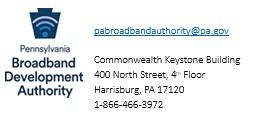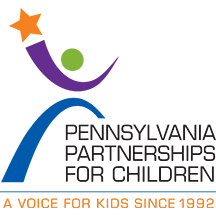- Public Inspection: CMS: Medicare Program: Implementation of Prior Authorization for Select Services for the Wasteful and Inappropriate Services Reduction Model
- CMS: Secretarial Comments on the CBE's (Battelle Memorial Institute) 2024 Activities: Report to Congress and the Secretary of the Department of Health and Human Services
- HHS: Patient Protection and Affordable Care Act: Marketplace Integrity and Affordability
- HRSA Announces Action to Lower Out-of-Pocket Costs for Life-Saving Medications at Health Centers Nationwide
- Public Inspection: HHS: Patient Protection and Affordable Care Act: Marketplace Integrity and Affordability
- Increased Risk of Cyber Threats Against Healthcare and Public Health Sector
- Eight Hospitals Selected for First Cohort of Rural Hospital Stabilization Program
- Announcing the 2030 Census Disclosure Avoidance Research Program
- CMS: Medicare Program; Hospital Inpatient Prospective Payment Systems for Acute Care Hospitals and the Long-Term Care Hospital Prospective Payment System and Policy Changes and Fiscal Year 2026 Rates; Requirements for Quality Programs; and Other Policy Changes; Correction
- CMS: Medicare Program; Hospital Inpatient Prospective Payment Systems for Acute Care Hospitals and the Long-Term Care Hospital Prospective Payment System and Policy Changes and Fiscal Year 2026 Rates; Requirements for Quality Programs; and Other Policy Changes; Correction
- CMS: Medicare and Medicaid Programs; Contract Year 2026 Policy and Technical Changes to the Medicare Advantage Program, Medicare Prescription Drug Benefit Program, Medicare Cost Plan Program, and Programs of All-Inclusive Care for the Elderly; Correction
- CMS: Medicare and Medicaid Programs; Contract Year 2026 Policy and Technical Changes to the Medicare Advantage Program, Medicare Prescription Drug Benefit Program, Medicare Cost Plan Program, and Programs of All-Inclusive Care for the Elderly; Correction
- CMS: Medicare Program; Prospective Payment System and Consolidated Billing for Skilled Nursing Facilities; Updates to the Quality Reporting Program for Federal Fiscal Year 2026
- CMS: Medicare Program; FY 2026 Hospice Wage Index and Payment Rate Update and Hospice Quality Reporting Program Requirements
- Public Inspection: CMS: Medicare Program: Fiscal Year 2026 Hospice Wage Index and Payment Rate Update and Hospice Quality Reporting Program Requirements
Organizational Factors Associated with Using Telehealth Services: Perspectives from Leaders of Rural Health Clinics and Federally Qualified Health Centers
The COVID-19 Public Health Emergency (PHE) drove the expanded use of telehealth, during which time healthcare providers deferred elective and preventive visits and many patients avoided necessary healthcare services to minimize their risk of exposure, resulting in a shift to telehealth to provide access to essential healthcare services.
To date, little information has been available on the organizational challenges associated with the provision of telehealth services by Rural Health Clinics (RHCs) and Federally Qualified Health Centers (FQHCs). This project asked leaders in selected RHCs and FQHCs to identify challenges, trends, and resources needed in adapting telehealth services to their settings.
Finding of this study include implementation and operational challenges as well as opportunities.
Please click here to read the brief.
Rural Telehealth Research Center
Rural Telehealth Research Center, University of Iowa, 200 Hawkins Drive, 1008 RCP, Iowa City, IA 52242
Email: rtrc-inquiry@uiowa.edu
www.ruraltelehealth.org
Study Links Health Center Closures to Higher County Mortality Rates
The loss of Community Health Center (CHC), sites in the United States is associated with a significant increase in county-level mortality, particularly in underserved areas, according to a new national study.
The peer-reviewed study, which was published in April 2025 in Health Services Research, analyzed data from 3,142 U.S. counties between 2011 and 2019, and found that counties that lost CHC sites in 2014 experienced an average increase of 3.54 age-adjusted all-cause deaths per 100,000 residents in the year following the loss. This increase was most pronounced in cancer-related deaths, which rose by 2.61 deaths per 100,000 residents. The closures appeared to have a lasting impact in the years that followed, according to the researchers.
What Is an HRA? Learn More.
Health Reimbursement Arrangements (HRAs) reimburse employees for medical expenses and are offered and funded by employer contributions. If an employer offers an HRA the employee can use that benefit to enroll in health coverage through Pennie, but this may affect their eligibility for tax credits. This information must be added to their Pennie application and the Advanced Premium Tax Credits (APTC) amount adjusted to prevent tax liability.
There are several types of HRAs, including individual coverage health reimbursement arrangements (ICHRA) and qualified small employer health reimbursement arrangements (QSEHRA). Individuals offered an ICHRA are not eligible for APTC, but those offered a QSEHRA might be based on other factors. If an individual is offered an HRA, they should receive information from their employer regarding the type of HRA offered. This information will also include the amount of the benefit, effective dates, other family members who may be covered, if minimal essential coverage is required, and any other terms set forth by the employer.
Healthy Children, Healthy Teeth Toolkit Launched
Pennsylvania Chapter, American Academy of Pediatrics and the Healthy Teeth, Healthy Children program is excited to announce that the School Professional Oral health Training (SPOT) toolkit is now ready to view and share. This comprehensive resource is designed to support all school professionals in promoting oral health within their school communities. The SPOT toolkit includes practical guidance, engaging materials, and evidence-based strategies to help integrate oral health into everyday school life.
Find Great Data on Pennsylvania Department of Human Services Dashboards and Reports
Did you know you can check out all the Pennsylvania Department of Human Services (DHS) data and reports in one place? Check out the DHS Data Dashboards and Reports page for Medicaid data by county, legislative district, and more. The page also includes data for the Supplemental Nutrition Assistance Program (SNAP). Report topics include child welfare, county block grant funds, early childhood education, developmental programs, long-term care, Medicaid, mental health, personal care homes, and the Office of Long-Term Living.
Pennsylvania Bipartisan Bill Supports Hiring International Medical School Graduates
The Pennsylvania House Health Committee is supporting legislation to help hire international medical school graduates to work in underserved areas. House Bill 425, sponsored by Rep. Kristin Marcell (R-Bucks) and Rep. Arvind Venkat (D-Allegheny), authorizes state grants to pay a share of a graduate’s salary in exchange for three years of practicing in medically underserved areas of Pennsylvania. If passed, this funding could help rural health centers meet the prevailing wage requirements of visa waiver programs.
Pennsylvania BEAD Restructuring Policy Notice: Unlicensed Fixed Wireless and BEAD Location Eligibility

The Pennsylvania Broadband Development Authority (PBDA) is notifying unlicensed fixed wireless (ULFW) providers who currently operate in the Commonwealth of Pennsylvania, the opportunity to demonstrate that BEAD funding is not required for specific locations they currently serve. This effort aligns with requirements outlined in the BEAD Restructuring Policy Notice issued by NTIA on June 6, 2025.
For more information on how to submit evidence and the deadlines, please visit the BEAD Program page. You will find the “Unlicensed Fixed Wireless and BEAD Location Eligibility” policy notice at the top of the page.
Pennsylvania Ranks 20th in 2025 KIDS COUNT Data Book; State Partnership for Children Urges Federal Focus on Supporting Thriving Kids and Families

Pennsylvania ranks 20th in child well-being, according to the 2025 KIDS COUNT Data Book, a 50-state report of recent data developed by the Annie E. Casey Foundation analyzing how kids are faring in post-pandemic America. The data show Pennsylvania leaders — particularly its congressional delegation — must do more to protect critical safety net programs that help children thrive.
In the Data Book’s economic well-being domain, which examines child poverty among other indicators, Pennsylvania ranks 22nd. In 2023, approximately 16%, or 404,000 of the state’s children, lived in poverty (defined as yearly income below $30,900 for a family of two adults and two children).
According to the Data Book, Pennsylvania ranks 20th in the health domain, with 147,000 uninsured children in the commonwealth. In every community across Pennsylvania, Medicaid plays a significant role in keeping kids covered and healthy. As families grapple with the rising costs of everyday expenses, it’s more important than ever that they have access to high-quality, affordable health care for both physical and mental health.
Congress is considering the largest cuts to Medicaid in the program’s history, which would jeopardize coverage for more than 1.2 million children (39% of the state’s child population) who rely on it. This includes children with special health care needs, those living in the foster care system, children in rural areas, children from military families, and those in low-income working families.
Funding for the Supplemental Nutrition Assistance Program (SNAP), which provides food benefits to low-income families to supplement their grocery budgets and afford nutritious food essential to health and well-being, is also on the chopping block as Congress considers massive federal cuts to the program. According to the Pennsylvania Department of Human Services, 24% of all Pennsylvania children and young adults under 21 (or nearly 760,000) are enrolled in SNAP.
Each year, the Data Book presents national and state data from 16 indicators in four domains — economic well-being, education, health, and family and community factors — and ranks the states according to how children are faring overall.
In its 36th year of publication, the KIDS COUNT® Data Book provides reliable statewide numbers to help leaders see where progress is being made, where greater support is needed and which strategies are making a difference. Pennsylvania Partnerships for Children encourages lawmakers and officials to use this detailed information to unite across party lines and respond with initiatives that invest in young people. By offering a local road map, the Data Book equips policymakers, advocates and communities with the information they need to make decisions that help kids and young people thrive.
The 2025 KIDS COUNT Data Book is available at www.aecf.org/databook and Pennsylvania’s data profile can be found here.
CMS Fraud Defense Operations Center: Permanent Launch and Pilot Fact Sheet

The Centers for Medicare and Medicaid Services (CMS) is making the Fraud Defense Operations Center (FDOC) pilot a permanent approach to crush fraud. Following a successful pilot that saved $105M thus far, the FDOC seeks to integrate cross-functional expertise through a specialized team of data analysts, investigators, health policy experts, legal advisors, and law enforcement. The pilot ended is now becoming permanent.
CMS is committed to crushing fraud, waste, and abuse to protect Americans enrolled in our programs from being victimized by healthcare fraud. The FDOC will assist the Agency to take swift action to take down bad actors, prevent payments from going to criminal operatives, and change wasteful or abusive policies.
From just March 31 – May 1, 2025, the pilot saved $105M, and will continue to help quickly identify and end fraud, waste, and abuse. This work will help detect, stop, and prevent fraud, waste, and abuse; safeguard Americans; protect taxpayer dollars; and leverage technology to stay ahead of bad actors. To learn more, view the newly released fact sheet on the pilot’s achievements.
Join us and stay up to date on the progress to crush fraud by visiting our website at cms.gov/fraud.
Registration Open! Fourth Annual Pennsylvania Community Health Worker Conference
Registration is now open for the Fourth Annual Pennsylvania Community Health Worker Conference taking place September 29-30 at the Penn Stater Hotel and Conference Center in State College. The conference is hosted collectively by the Eastcentral and Northcentral Area Health Education Centers.
